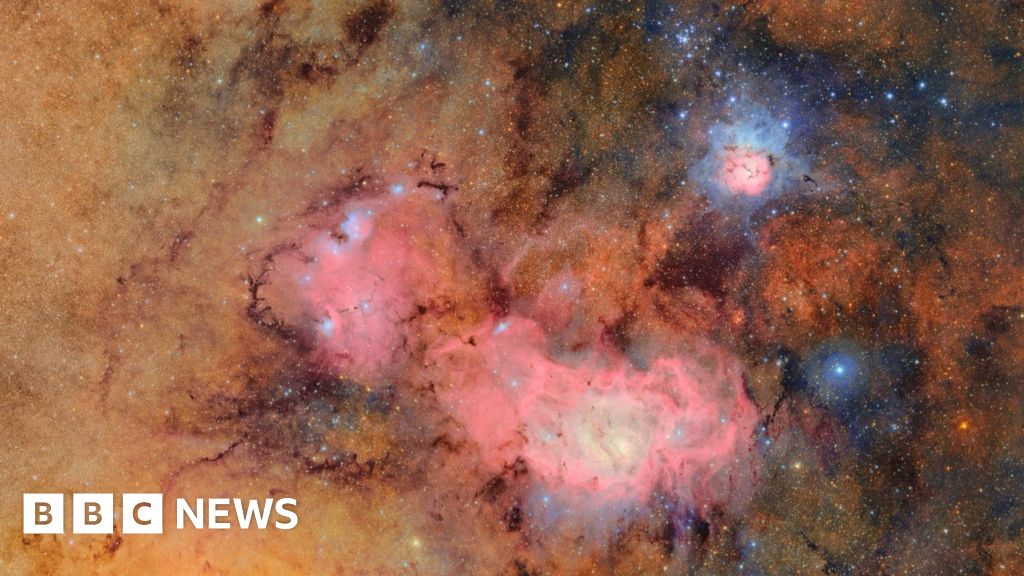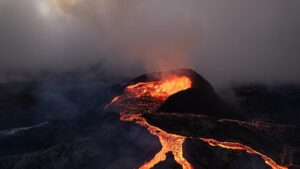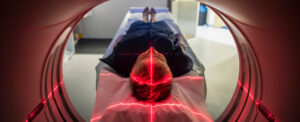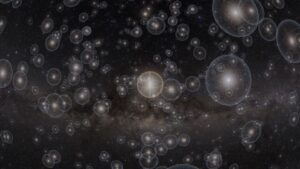
A powerful new telescope in Chile has released its inaugural images, showcasing its unprecedented ability to peer into the dark depths of the universe. The first image from the Vera C. Rubin Observatory reveals the Trifid and Lagoon nebulae in stunning detail, capturing vast, colorful gas and dust clouds swirling in a star-forming region 9,000 light-years from Earth. This development marks a significant milestone in astronomy, with the observatory poised to transform our understanding of the universe.
Situated on Cerro Pachón in the Chilean Andes, the Vera Rubin Observatory is home to the world’s most powerful digital camera. Scientists assert that if a ninth planet exists in our solar system, this telescope could discover it within its first year of operation. The observatory is expected to detect potentially hazardous asteroids, map the Milky Way, and address crucial questions about dark matter, the mysterious substance that constitutes most of our universe.
Revolutionary Capabilities and Global Collaboration
The Vera Rubin Observatory represents a once-in-a-generation moment for astronomy, embarking on a continuous 10-year survey of the southern night sky. Professor Catherine Heymans, Astronomer Royal for Scotland, expressed her excitement: “I personally have been working towards this point for about 25 years. For decades we wanted to build this phenomenal facility and to do this type of survey.” The United Kingdom plays a key role in this project, hosting data centers to process the extremely detailed snapshots captured by the telescope.
The observatory’s capabilities could increase the number of known objects in our solar system tenfold. The telescope’s 3,200-megapixel camera, built by the U.S. Department of Energy’s SLAC National Accelerator Laboratory, is a marvel of engineering. Its unique three-mirror design allows it to capture a vast amount of light, essential for observing distant astronomical phenomena from earlier cosmic times.
Astronomical Precision and Engineering
Maintaining optimal conditions for the telescope is crucial. The observatory is located in a very high, dry, and dark area, ideal for stargazing. The observatory’s engineering team ensures that the dome surrounding the telescope remains free from stray light, with even starlight being sufficient for navigation, as explained by commissioning scientist Elana Urbach. She emphasizes the importance of sharp images for understanding the universe’s history, including faint galaxies and supernova explosions from billions of years ago.
The telescope’s camera, weighing 2,800 kg and measuring 1.65m x 3m, provides a wide field of view and captures images roughly every 40 seconds for about 8-12 hours each night. With a resolution 67 times greater than an iPhone 16 Pro camera, it can capture details as minute as a golf ball on the Moon. Guillem Megias, an active optics expert at the observatory, highlighted the significance of the telescope’s light-capturing ability: “It’s really important to observe things from really far away which, in astronomy, means they come from earlier times.”
Global Impact and Future Discoveries
The observatory’s survey will focus on four key areas: mapping changes in the skies, understanding the formation of the Milky Way, mapping the Solar System, and exploring dark matter and the universe’s origins. Its greatest strength lies in its constancy, repeatedly surveying the same areas and alerting scientists to any changes.
As the Vera Rubin Observatory begins its decade-long mission, hundreds of scientists worldwide will analyze the data, which will generate up to 10 million alerts each night. The observatory’s discoveries promise to deepen our understanding of the cosmos and potentially reshape our perception of the universe.
Reflecting on the project’s significance, Mr. Megias remarked, “When we got the first photo up here, it was a special moment. When I first started working with this project, I met someone who had been working on it since 1996. I was born in 1997. It makes you realize this is an endeavor of a generation of astronomers.”





